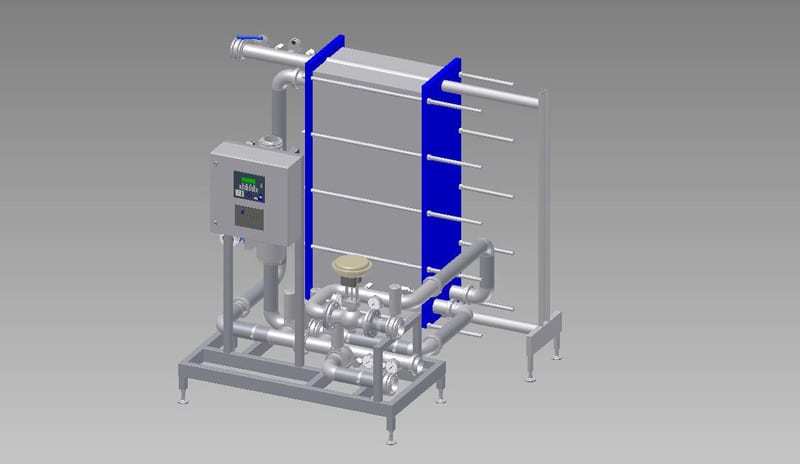Cooling of Wort

The Wort Cooler reduces the temperature of wort to the required pitching temperature. In breweries, cooling is typically performed after wort boiling and trub separation.
For wort cooling a plate heat exchanger is used. The cooling process is done in one or two stages. In a single-stage process cold brewing water is used as the single cooling medium. The brewing water can be cooled to approximately 34°F (1°C) in a separate chiller operated with glycol, ammonia or brine.
The wort enters the plate heat exchanger at about 212°f (100°C). Due to the interaction of the hot wort and the cold brewing water in the heat exchanger, the temperature of the wort is lowered to approx. 36 - 37°F (2 - 3°C) while the temperature of the brewing water is raised to about 176°F (80°C). The brewing water is used for the next brew, so the energy is returned to the brewing process.
In a two-stage process, the hot wort is first cooled by brewing water to approx. 68°F (20°C) and then by glycol, ammonia or brine to the pitching temperature. The warm brewing water can also be used for the next brew.
Typical Technical Data
-
Capacity
265 - 53,000 gal/h (10 - 2,000 hl/h)
-
Material
1.4301/AISI 304; 1.4404/AISI 316L; etc.
-
Options
booster pump
wort cooler
yeast pitching
Highlights
- High energy efficiency with brewing water as cooling medium
- Hygienic, single- or double stage execution; full CIP capability
- Customized design; different automation levels
